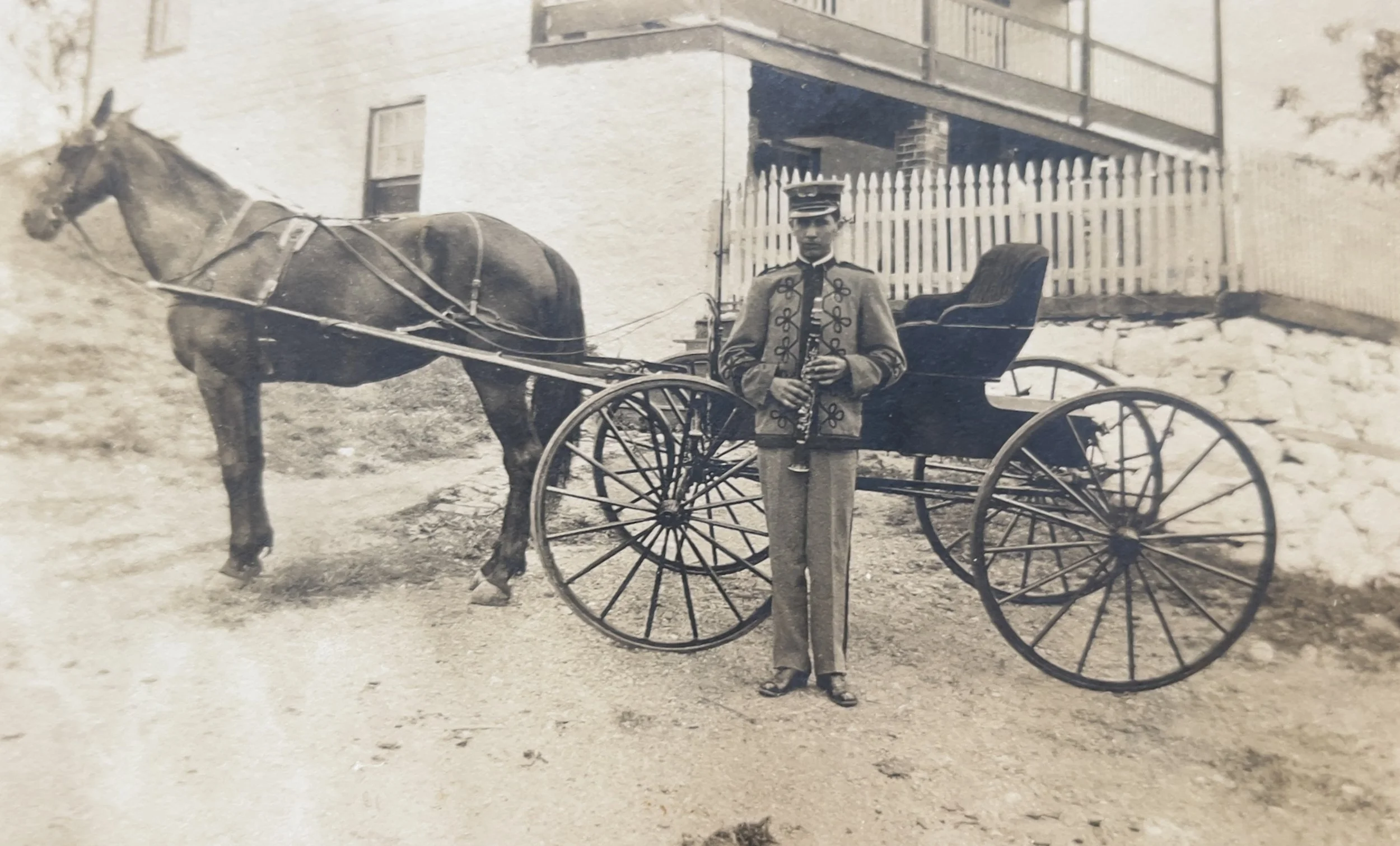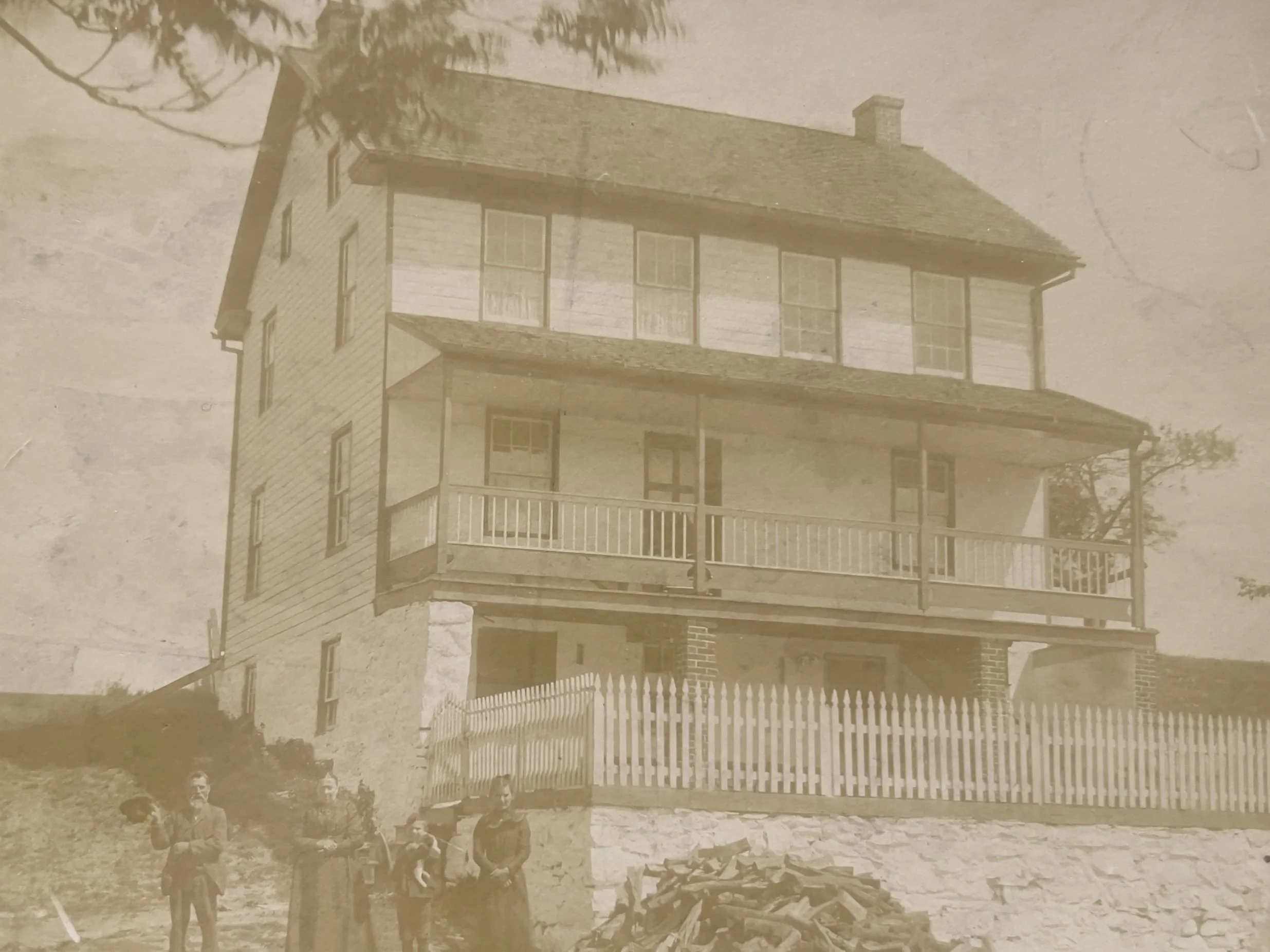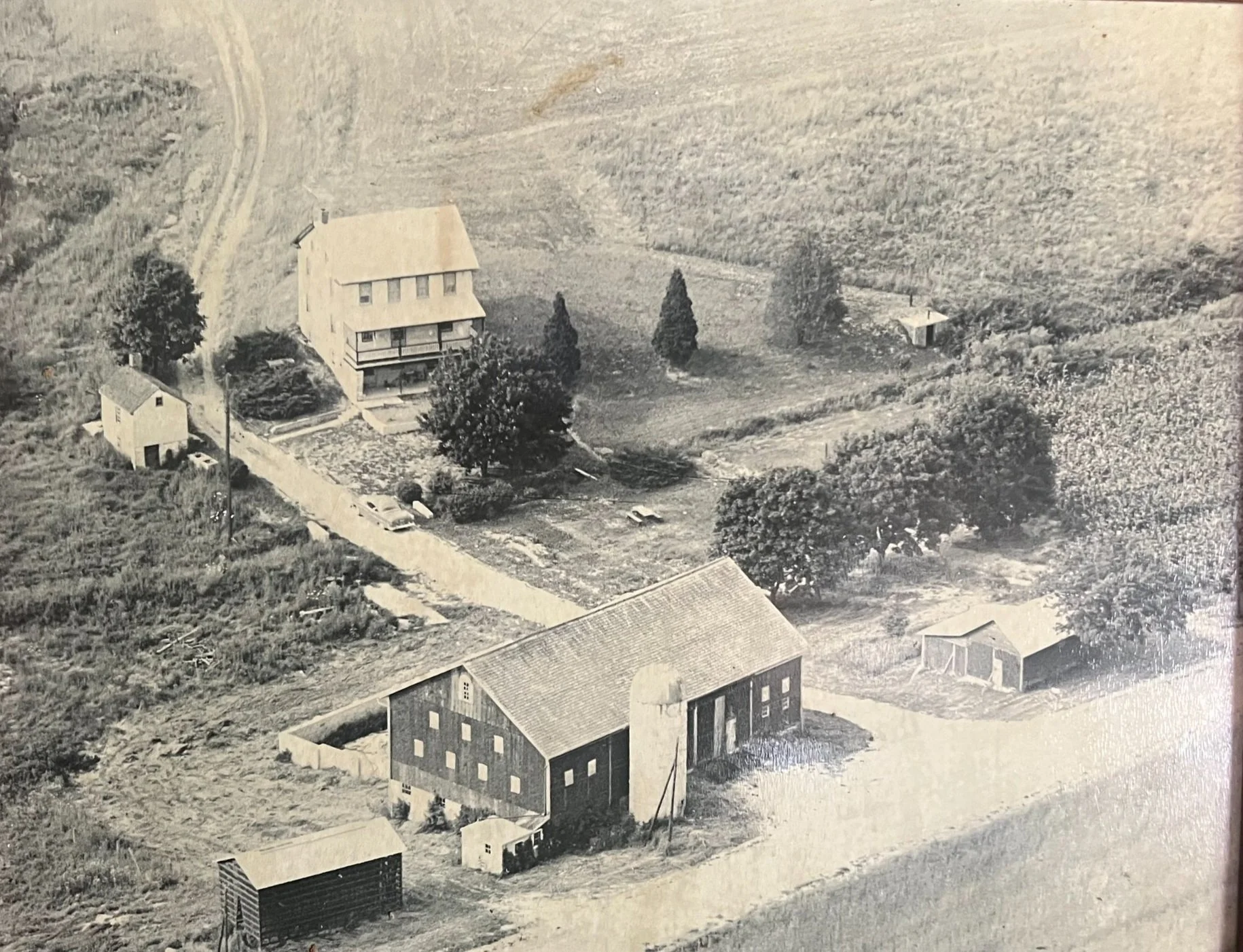A Brief History of the Snow Daisy Inn
The land upon which the Snow Daisy Inn now stands has a storied past that stretches deep into the 19th century. Originally part of a large tract owned by the Blucker family along what is now Laurence Drive, the property changed hands several times across generations, each leaving its unique mark on the land and its buildings.
One of the earliest known stewards of this land was Eli Houck, who is believed to have built the farmhouse in the 1840s, after working as an indentured servant for over 30 years. Following the Civil War, Eli was finally able to purchase the land around 1863, paying approximately $4,000—a significant sum for the time. He later constructed the barn, dated 1877 or 1878, which still stands as a testament to his labor and craftsmanship.
Eli’s son Cletus and his wife Mary lived on the property after him, and their son, Murray Houck, inherited the land in the early 20th century. In 1949, Murray attempted to sell the property. It was eventually purchased by Frank and Carrie Feeser for $3,800. Just a few years later, in 1952, the property changed hands again when it was sold to the Brown family in exchange for a corn crop and $9,000. Edward Murphy then purchased the land and buildings in 1955 for $13,500, which included approximately 58 acres, the farmhouse, and the barn.
Over the decades, parts of the original property were subdivided. The land to the south of Laurence Drive was divided into residential lots and sold off. By 1974, the home and a reduced tract of land were listed for $35,000, and later that year, James and Ruth Neiderer acquired the house and 1.33 acres for $25,000 from Edward Murphy. This marked the transition of the home into a new chapter of preservation and care.
Historical records suggest the property may have once been part of a larger estate owned by Henry Wentz, which was conveyed to Elias Houck (Eli) and his wife Amelia in 1871. Though the formal record of this transfer appears in a deed dated 1924, the oral and written histories connect the Houck family to the land far earlier.
One of the most intriguing aspects of the property’s legacy is tied to Amelia Houck, wife of Elias. According to family accounts passed down through generations, Amelia was a practitioner of traditional Pennsylvania German folk healing, known as Pow-Wow or “Braucherei.” She was known to welcome people into the home, especially those who were unwell, offering spiritual and folk remedies rooted in centuries-old traditions. Her presence, compassion, and healing practices are an enduring part of the home’s identity—imbuing it with a unique and soulful energy that can still be felt today.



